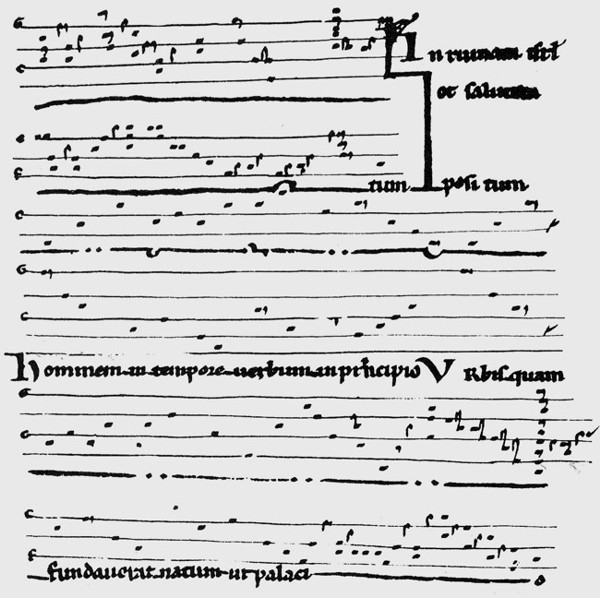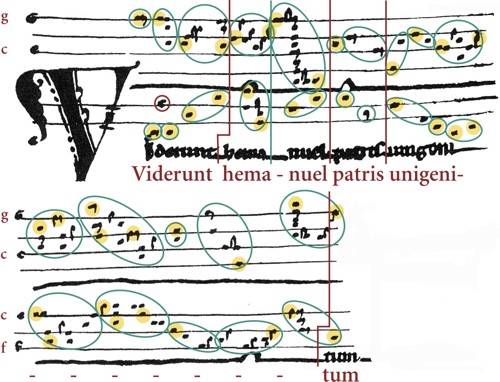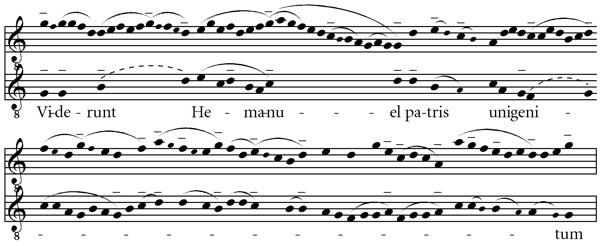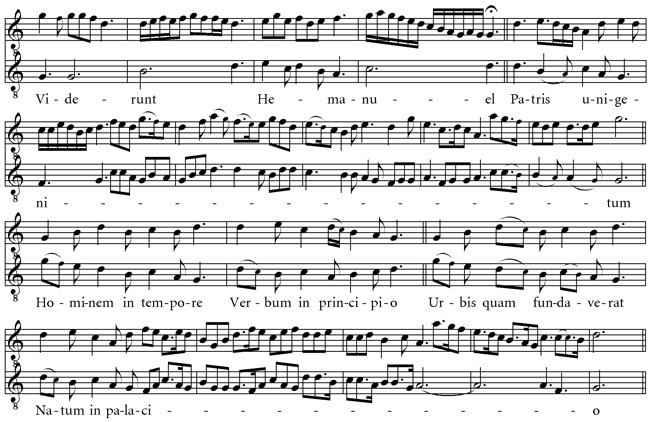音楽エッセイのページへ戻る
初期多声音楽の解説ページへ
St.マーシャル楽派へ
Viderunt Hemanuelのページへ
Viderunt
Hemanuel
notazione
di San Marziale (premensurale)

Cod. F-Pn, Lat 3549, c. 151 (San
Marziale di Limoges)

Cod. F-Pn, Lat 3549, c. 152 (San
Marziale di Limoges)
Viderunt Hemanuel | patris unigenitum
in ruinam Israel |
et salutem positum:
hominem in tempore, | verbum in principio,
urbis quam
fundaverat | natura in palacio
omnes fines terrae salutare Dei
nostri...
Verses 3
and 4 (b) are syllabic style transcription is fairly intuitive. I pointed out
the accents of the text and, in the cadenzante, those ligatures (which typically
end on an accented note or long).

Much
more problematic is the transcript of the first verse, all melismas and blooms.
You can highlight clusters of notes that reasonably should move simultaneously
and then highlight in yellow the main strong times (typically the last of the
agglomeration, but sometimes even the first if to coincide with a new
syllable).

If you
wanted to highlight of stricter criteria to recognize the seasons it can be
observed that, generally, the notes that fall on strong time:
―are isolated on tonic syllable
―found
in the conclusion of a melisma
―are
followed by apostropha
―are
not followed by a succession of vertical conlusive virga (which typically
extends up the agglomerate).
It is
clear, however, that these criteria do not always work and often there is a
unique solution. All doubtful cases (the majority) must be assessed in relation
to the harmonic behaviour. This first level of transcription tries to match
special times with the harmonies consonants as well as seize the suggestion of
writing.

If the
story were to adopt a unitary, 3 verses and m.m. would seem more appropriate for
4 use a compound (i.e. with ternary sudduvisione). This is to give fluidity to
the Cadence and empower notes with prefixes to back falling tone (probably
slipped: here indicated with a smaller note).
It is
said that the first two lines should adopt the same tempo of the subsequent
syllabic. May, because of the free-run, preferring a melismatic nature and
fluctuating. In this case only the practice will offer a yield musically
acceptable. If instead you wanted to give unity to the piece and keep the same
time for all four ways a possible transcription might be:







